Abstract
Analytical ultracentrifugation of highly purified seminalplasmin revealed a molecular mass of 6300. Amino acid analysis of the protein preparation indicated the absence of sulfur-containing amino acids cysteine and methionine. The amino acid sequence of seminalplasmin was determined by manual Edman degradation of peptides obtained by proteolytic enzymes trypsin, chymotrypsin and thermolysin: NH2-Ser Asp Glu Lys Ala Ser Pro Asp Lys His His Arg Phe Ser Leu Ser Arg Tyr Ala Lys Leu Ala Asn Arg Leu Ser Lys Trp Ile Gly Asn Arg Gly Asn Arg Leu Ala Asn Pro Lys Leu Leu Glu Thr Phe Lys Ser Val-COOH. The number of amino acids according to the sequence were 48, the molecular mass 6385. As predicted from the sequence, seminalplasmin very likely contains two α-helical domains in which residues 8-17 and 40-48 are involved. No evidence for the existence of β-sheet structures was obtained. Treatment of seminalplasmin with the above proteases as well as with amino peptidase M and carboxypeptidase Y completely eliminated biological activity.
Keywords: antimicrobial, bull seminal protein, amino acid sequence
Full text
PDF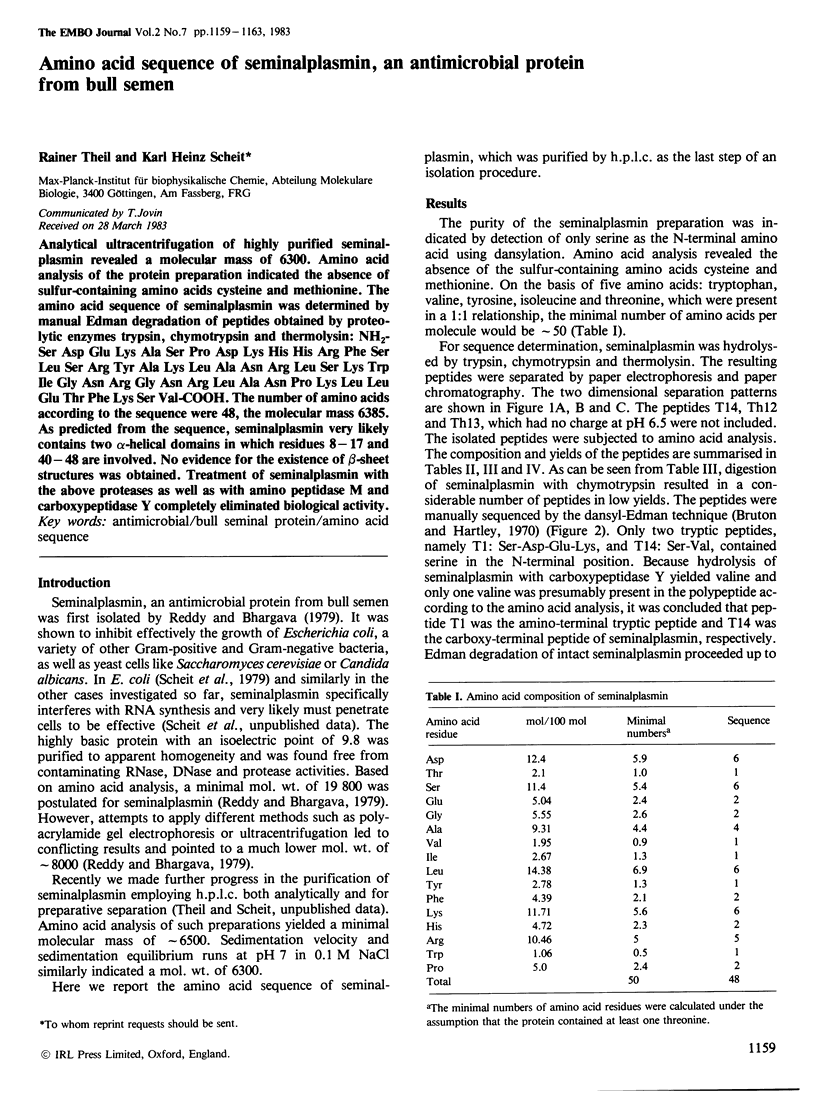
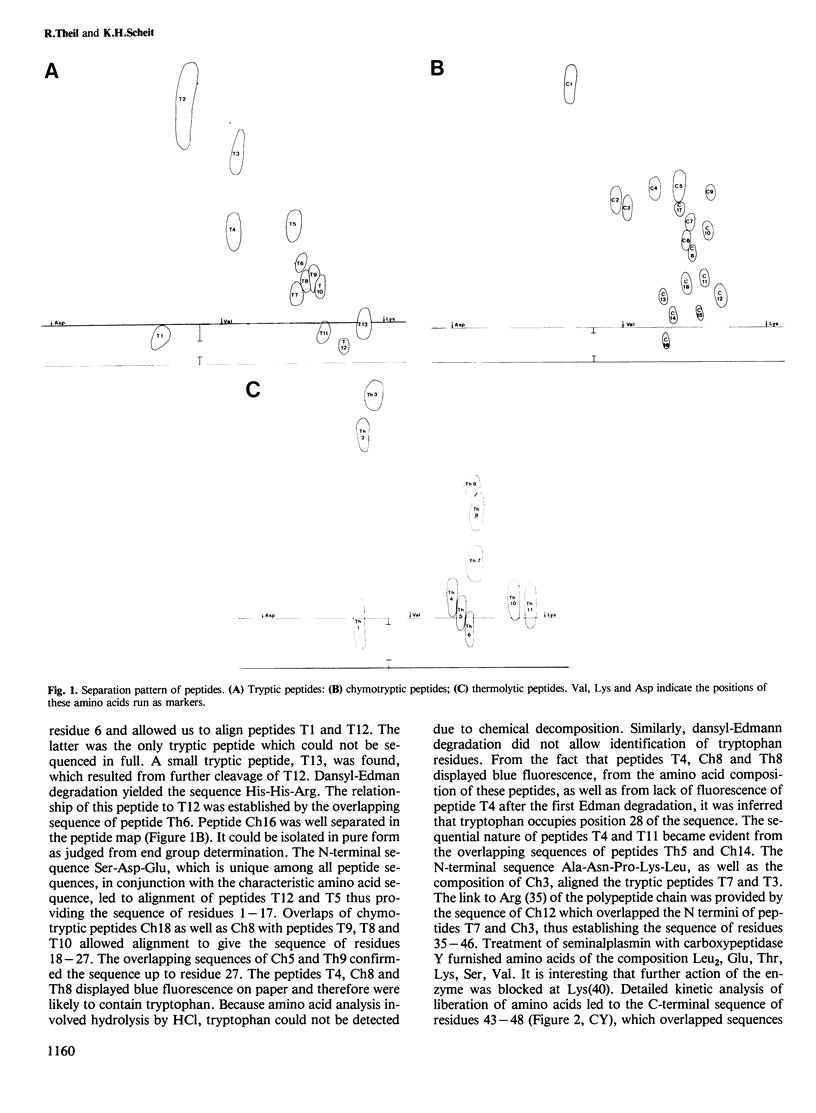
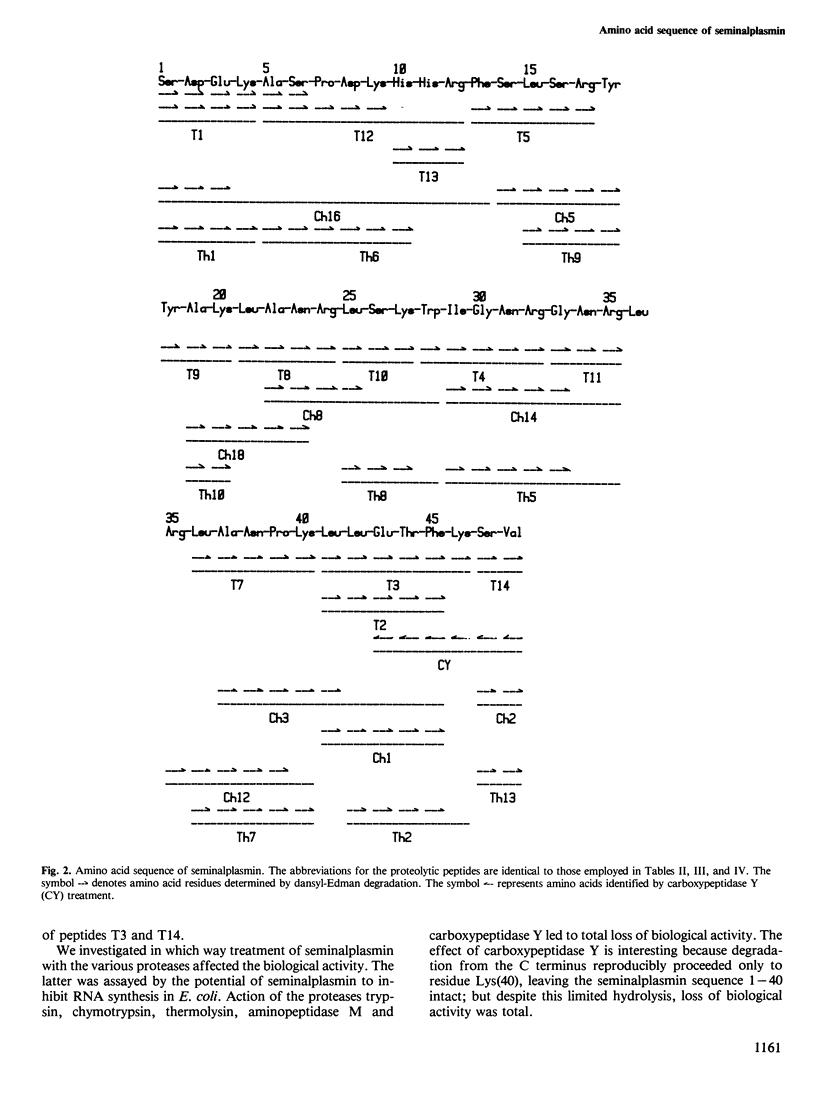
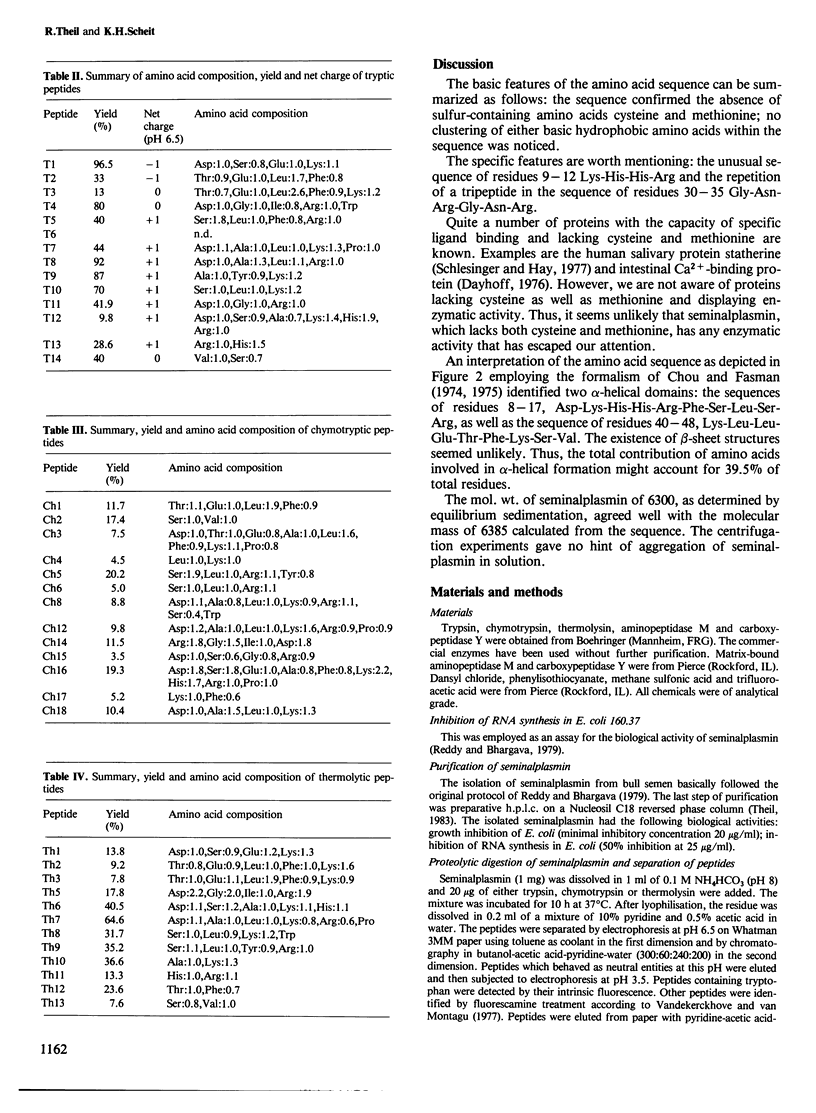
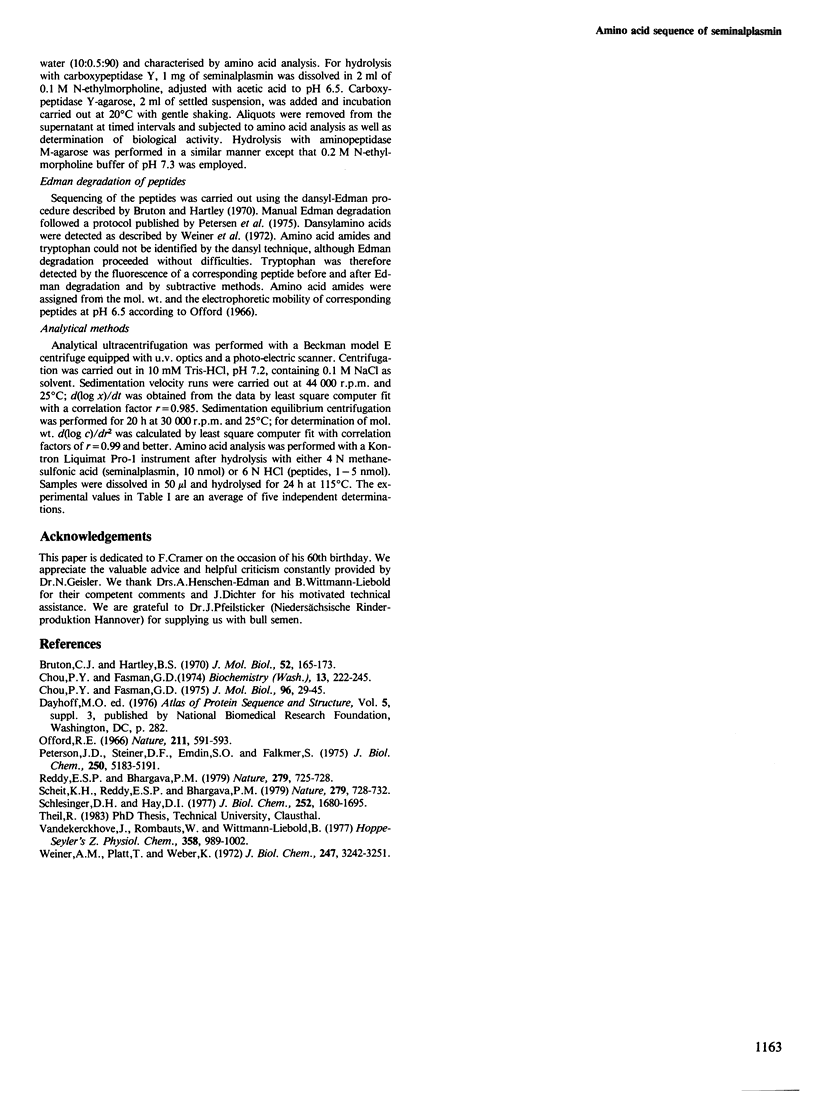
Selected References
These references are in PubMed. This may not be the complete list of references from this article.
- Bruton C. J., Hartley B. S. Chemical studies on methionyl-tRNA synthetase from Escherichia coli. J Mol Biol. 1970 Sep 14;52(2):165–178. doi: 10.1016/0022-2836(70)90023-9. [DOI] [PubMed] [Google Scholar]
- Chou P. Y., Adler A. J., Fasman G. D. Conformational prediction and circular dichroism studies on the lac repressor. J Mol Biol. 1975 Jul 25;96(1):29–45. doi: 10.1016/0022-2836(75)90180-1. [DOI] [PubMed] [Google Scholar]
- Chou P. Y., Fasman G. D. Prediction of protein conformation. Biochemistry. 1974 Jan 15;13(2):222–245. doi: 10.1021/bi00699a002. [DOI] [PubMed] [Google Scholar]
- Offord R. E. Electrophoretic mobilities of peptides on paper and their use in the determination of amide groups. Nature. 1966 Aug 6;211(5049):591–593. doi: 10.1038/211591a0. [DOI] [PubMed] [Google Scholar]
- Peterson J. D., Steiner D. F. The amino acid sequence of the insulin from a primitive vertebrate, the atlantic hagfish (Myxine glutinosa). J Biol Chem. 1975 Jul 10;250(13):5183–5191. [PubMed] [Google Scholar]
- Reddy E. S., Bhargava P. M. Seminalplasmin--an antimicrobial protein from bovine seminal plasma which acts in E. coli by specific inhibition of rRNA synthesis. Nature. 1979 Jun 21;279(5715):725–728. doi: 10.1038/279725a0. [DOI] [PubMed] [Google Scholar]
- Scheit K. H., Reddy E. S., Bhargava P. M. Seminaplasmin is a potent inhibitor of E. coli RNA polymerase in vivo. Nature. 1979 Jun 21;279(5715):728–731. doi: 10.1038/279728a0. [DOI] [PubMed] [Google Scholar]
- Schlesinger D. H., Hay D. I. Complete covalent structure of statherin, a tyrosine-rich acidic peptide which inhibits calcium phosphate precipitation from human parotid saliva. J Biol Chem. 1977 Mar 10;252(5):1689–1695. [PubMed] [Google Scholar]
- Vandekerckhove J., Rombauts W., Wittmann-Liebold B. The complete amino acid sequence of protein S16 from Escherichia coli. Hoppe Seylers Z Physiol Chem. 1977 Aug;358(8):989–1002. doi: 10.1515/bchm2.1977.358.2.989. [DOI] [PubMed] [Google Scholar]
- Weiner A. M., Platt T., Weber K. Amino-terminal sequence analysis of proteins purified on a nanomole scale by gel electrophoresis. J Biol Chem. 1972 May 25;247(10):3242–3251. [PubMed] [Google Scholar]


